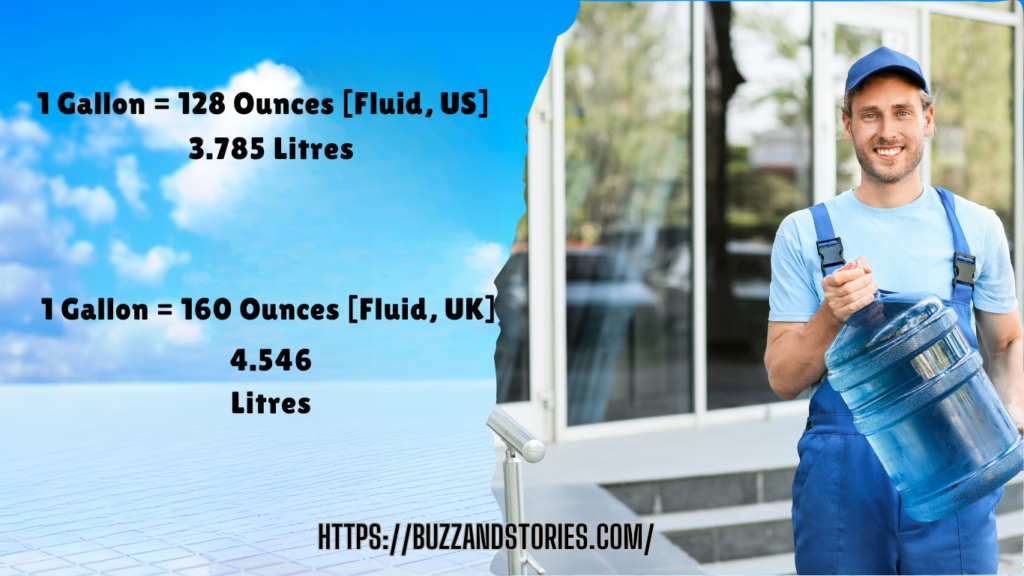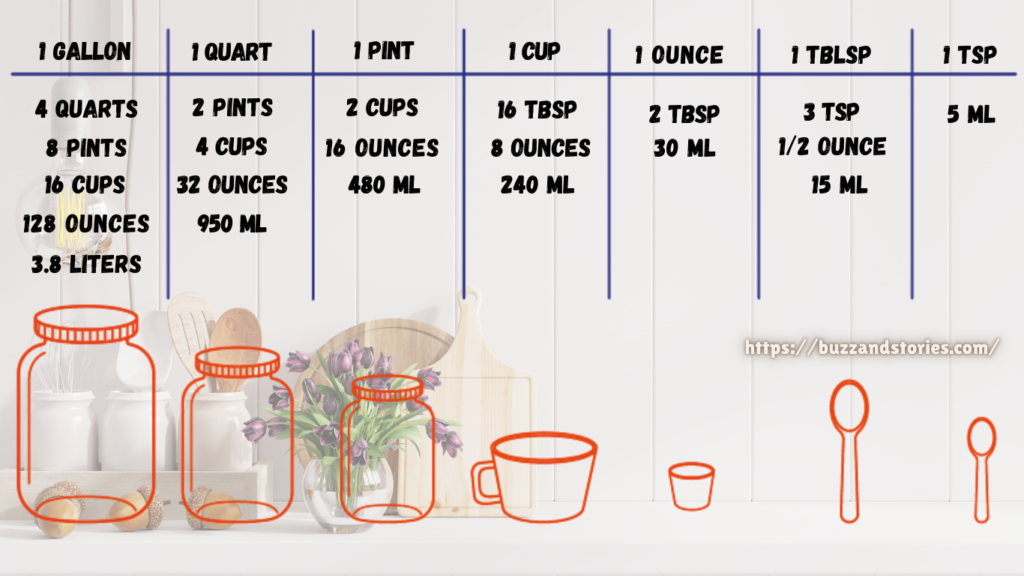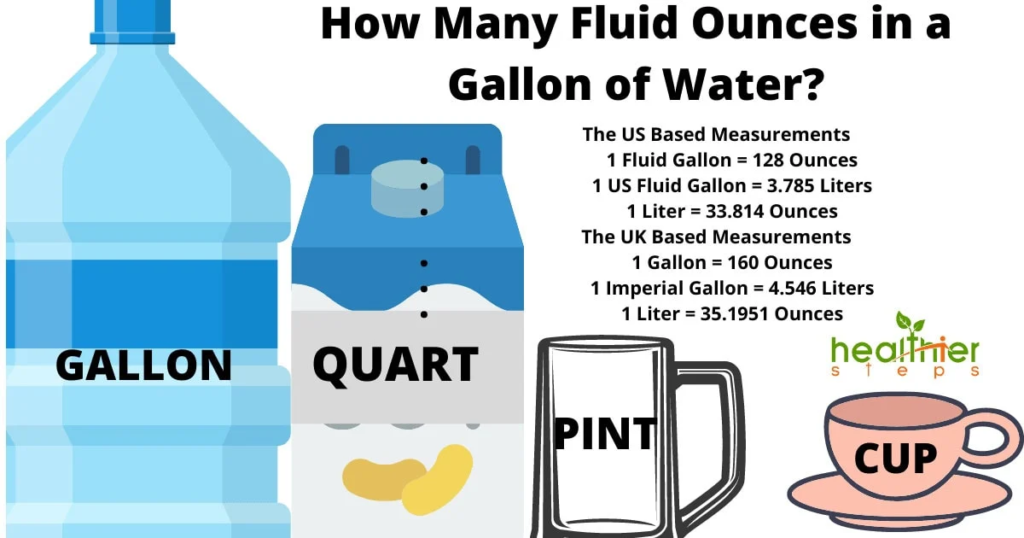Introduction: Understanding Gallon and Ounce Measurements
Understanding how many ounces are in a gallon might seem trivial, but it’s a handy piece of knowledge that comes into play more often than you think. Whether you’re measuring ingredients for a recipe, tracking your daily water intake, or mixing cleaning solutions for a DIY project, having a clear grasp of these basic conversions can save you time and ensure accuracy.
Why Is This Important?
Knowing the relationship between ounces and gallons helps simplify everyday tasks. Imagine you’re in the kitchen, and a recipe calls for a gallon of liquid, knowing exactly how many ounces you need means you won’t second-guess your measurements. Similarly, if you’re trying to stay hydrated, understanding how many ounces are in a gallon can help you track your water consumption throughout the day.

Everyday Contexts: Where Gallons and Ounces Meet
- Cooking: From soups to smoothies, the right measurements ensure your recipes turn out just right.
- Health: Tracking water intake is key for maintaining good health, and converting between ounces and gallons can help set daily hydration goals.
- DIY Projects: Whether you’re mixing paints or creating homemade cleaning solutions, precise measurements make all the difference.
Understanding these conversions isn’t just for the mathematically inclined, it’s a practical skill that makes life a little smoother.
1: Basic Conversion – How Many Ounces Are in 1 Gallon?

The Straightforward Answer: 1 Gallon = 128 Ounces
Let’s start with the basics: in the United States, 1 gallon equals 128 ounces. This conversion is a staple in both cooking and everyday life, making it essential to understand when measuring liquids. Knowing this number off the top of your head can save you from guesswork whether you’re refilling a water jug or doubling a recipe.
Different Types of Gallons: US vs. UK
While the US gallon is what most of us are familiar with, it’s worth noting that not all gallons are created equal. The UK (Imperial) gallon, which is used in some other parts of the world, is slightly larger, equaling about 160 ounces. This difference can lead to some confusion, especially when following international recipes or instructions. Always make sure you know which gallon you’re dealing with!
Why Does This Matter?
Understanding these basic conversions helps you accurately adjust quantities without reaching for a calculator every time. Whether you’re a seasoned chef, a hydration enthusiast, or a DIY creator, getting familiar with these measurements can streamline your tasks.
2: Why Is Knowing Ounces in a Gallon Important?

Everyday Scenarios Where Measurements Matter
Knowing how many ounces are in a gallon might seem like a small detail, but it plays a significant role in our daily lives. From the kitchen to your health goals, having this knowledge at your fingertips can make a world of difference. Here’s how:
- Perfecting Your Recipes: Ever tried to scale a recipe up or down and felt lost with measurements? Whether you’re cooking up a family dinner or whipping up a batch of your favorite drink, knowing exact conversions helps ensure that your dishes turn out just as delicious as intended. Precise measurements are the secret ingredient in every successful recipe.
- Staying Hydrated: We’ve all heard the advice to drink a certain number of ounces of water per day, but it can get confusing. By understanding that a gallon equals 128 ounces, you can easily track your daily water intake. For example, if your goal is to drink half a gallon of water a day, you’ll know that’s 64 ounces or about four 16-ounce water bottles.
- DIY and Home Projects: If you’re mixing solutions for cleaning, gardening, or even crafting, accurate measurements prevent you from using too much or too little. Knowing the conversion helps keep your projects running smoothly without wasting materials.
Bringing It All Together: Measurements for a Hassle-Free Life
Understanding ounces and gallons isn’t just about numbers, it’s about making everyday tasks easier and more efficient. The next time you’re in the kitchen or tackling a home project, you’ll appreciate having these conversions at your fingertips.
3: Common Conversions You Need to Know

Handy Conversions at Your Fingertips
Having quick reference conversions can make all the difference when you’re in the middle of cooking, filling up your water bottle, or measuring liquids for any project. Here’s a simple breakdown of some of the most common conversions involving ounces and gallons that will keep you on track without the need for constant calculations.
- 1 Gallon = 128 Ounces
This is the go-to conversion and the one you’ll use most often. Whether you’re making a large batch of lemonade or measuring out water for a big event, this is your key number. - Half-Gallon = 64 Ounces
Perfect for when you need a little less than a full gallon think half a gallon of milk or juice. This conversion is great for those medium-sized recipes or when you’re tracking your water intake halfway through the day. - Quarter Gallon = 32 Ounces
A quarter gallon is often the size of a standard large water bottle, making it an easy benchmark for hydration goals or quick recipes that require smaller quantities. - 1 Cup = 8 Ounces
Cups are commonly used in cooking and baking, so knowing that each cup equals 8 ounces can help you accurately measure smaller quantities of ingredients without any guesswork.
Quick Reference: Keep These Conversions Close
These simple conversions can save you time and help avoid any mix-ups, especially when precision matters. Keep this list handy, and you’ll always have the right measurement at your fingertips, whether you’re pouring, mixing, or planning.
4: Practical Uses of Ounces to Gallons Conversion

Real-World Scenarios Where Ounces to Gallons Matter
Understanding the conversion between ounces and gallons isn’t just a math skill it’s a real-world tool that makes everyday life simpler. Let’s dive into some practical uses where knowing how to convert ounces to gallons can make all the difference.
- Cooking and Baking: Whether you’re making a big batch of soup, preparing a punch for a party, or scaling up a favorite recipe, knowing the ounces-to-gallons conversion can keep your dishes on point. For example, when a recipe calls for a gallon of stock but you only have smaller measuring cups on hand, knowing the exact conversions ensures you’re adding the right amount every time.
- Hydration Tracking: Staying hydrated is essential, and many of us aim for specific daily water intake goals. Understanding that a gallon equals 128 ounces helps you track how much you’re drinking without needing to count every bottle. If your goal is to drink half a gallon daily, knowing that’s 64 ounces makes it easy to monitor your progress throughout the day.
- DIY and Home Projects: From mixing homemade cleaning solutions to preparing garden sprays, accurate measurements prevent waste and ensure effectiveness. Knowing how many ounces are in a gallon can help you mix the right proportions, saving you time, money, and effort.
Making Life Easier, One Measurement at a Time
The uses of these conversions extend far beyond the kitchen. They can help you stay healthy, save resources, and ensure success in your DIY endeavors. Knowing these conversions means less guesswork and more precision, making every project or task a little bit easier.
5: Tips for Remembering Ounces to Gallon Conversions

Simple Tricks to Keep Conversions in Mind
Remembering that 1 gallon equals 128 ounces might not stick right away, but with a few clever tips, you’ll have this conversion down in no time. Whether you’re a visual learner or prefer using tech tools, these tips will help you keep those numbers at the ready.
- Use the “Gallon Man” Visual Trick: One popular memory aid is the “Gallon Man” drawing. Picture a big gallon jug with four quarts inside, each quart holding two pints, and each pint containing two cups. By visualizing this hierarchy, you can easily break down a gallon into smaller, manageable units, which helps reinforce that a gallon is 128 ounces.
- Think in Terms of Water Bottles: If you often drink from a 16-ounce water bottle, think of a gallon as eight of those bottles. This makes the conversion more tangible, especially if you’re trying to track water intake or picture how much liquid a gallon actually holds.
- Mnemonic Devices: Try using a simple phrase like “Giant Al’s Laundry Loves Eighty-Two Octopuses.” While it sounds silly, it helps you remember that Gallon Always Loves Eighty-Two Ounces or, rather, 128 ounces in a gallon.
- Leverage Technology: There are several apps and kitchen gadgets designed to make conversions effortless. Apps like Unit Converter and Kitchen Calculator allow you to quickly input a number and get an instant conversion, perfect for when you’re on the go or in the middle of a recipe.
Making Conversions Second Nature
With these handy tips, you’ll never have to second-guess how many ounces are in a gallon. Choose the memory aid that works best for you, and soon, these conversions will feel as natural as knowing how many days are in a week.
FAQs
-
Q1: How many ounces are in a half-gallon?
A1: A half-gallon contains 64 ounces. It’s exactly half of the 128 ounces in a full gallon, making it an easy conversion to remember, especially when dealing with drinks and recipes.
-
Q2: Is there a difference between UK and US gallon measurements?
A2: Yes, there is a difference. The US gallon equals 128 ounces, while the UK (or Imperial) gallon is slightly larger at about 160 ounces. This difference can trip you up if you’re working with international recipes or instructions, so it’s always good to double-check which measurement you’re dealing with!
-
Q3: How can I convert ounces to gallons without a calculator?
A3: Converting ounces to gallons is simple just divide the number of ounces by 128. For instance, if you have 256 ounces, divide by 128, and you’ll find you have 2 gallons. It’s a quick and easy calculation that you can even do in your head with smaller numbers!
-
10 Common Fashion Mistakes That Make You Look Older
1. Introduction: How Your Wardrobe Might Be Aging You We’ve all been there standing in […]
-
10 Styling Mistakes Short Women Make and How to Fix Them
Introduction: We all know fashion is a powerful way to express ourselves, but for shorter […]
-
25 Elegant Christmas Decoration Ideas 2024
When the holiday season approaches, we all find ourselves longing to create a warm, inviting […]














